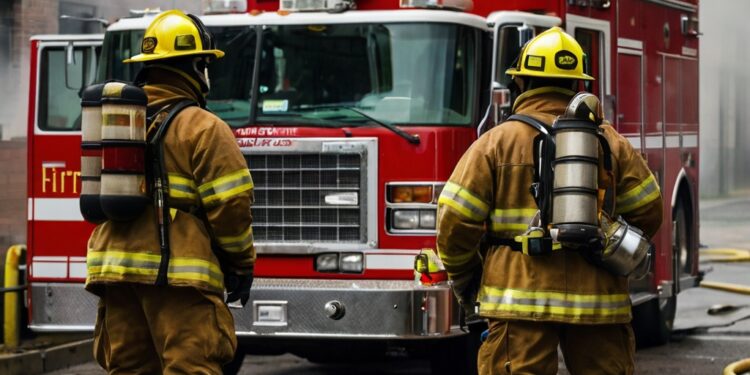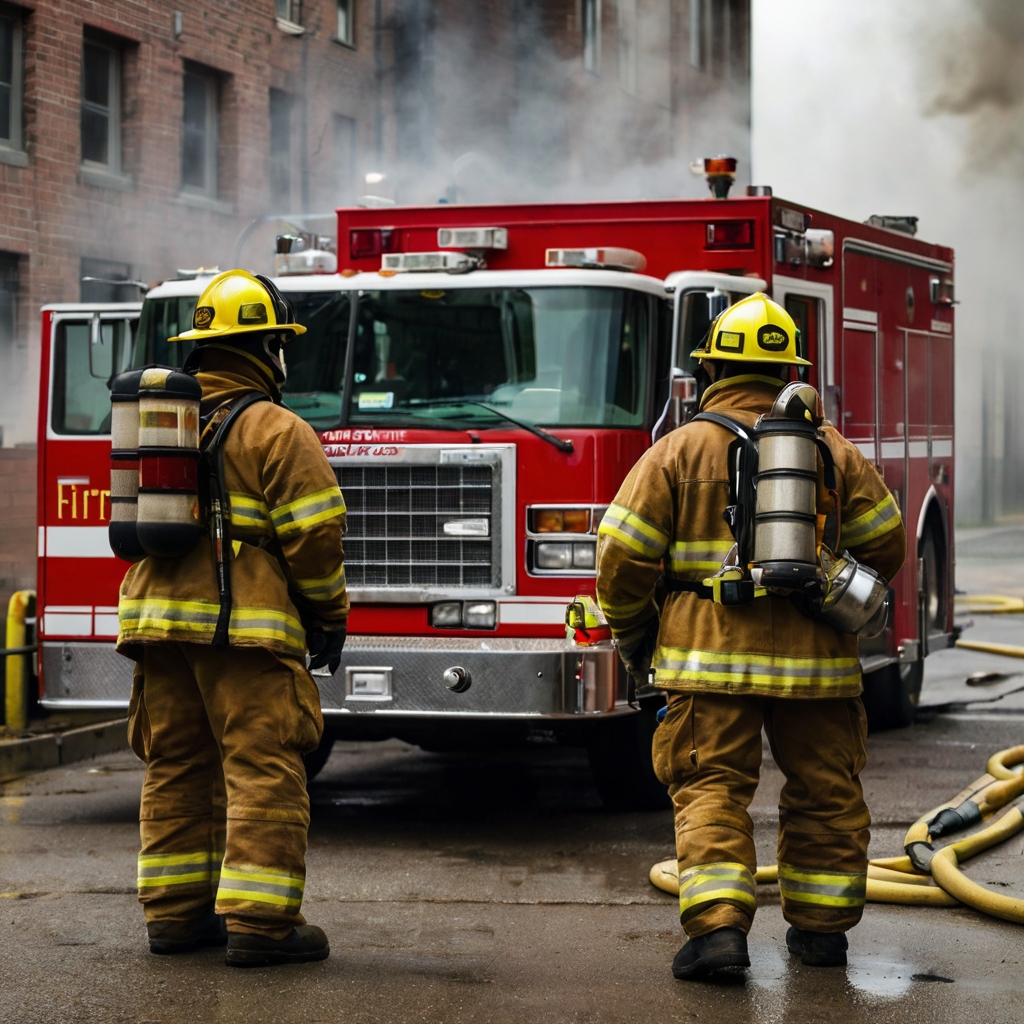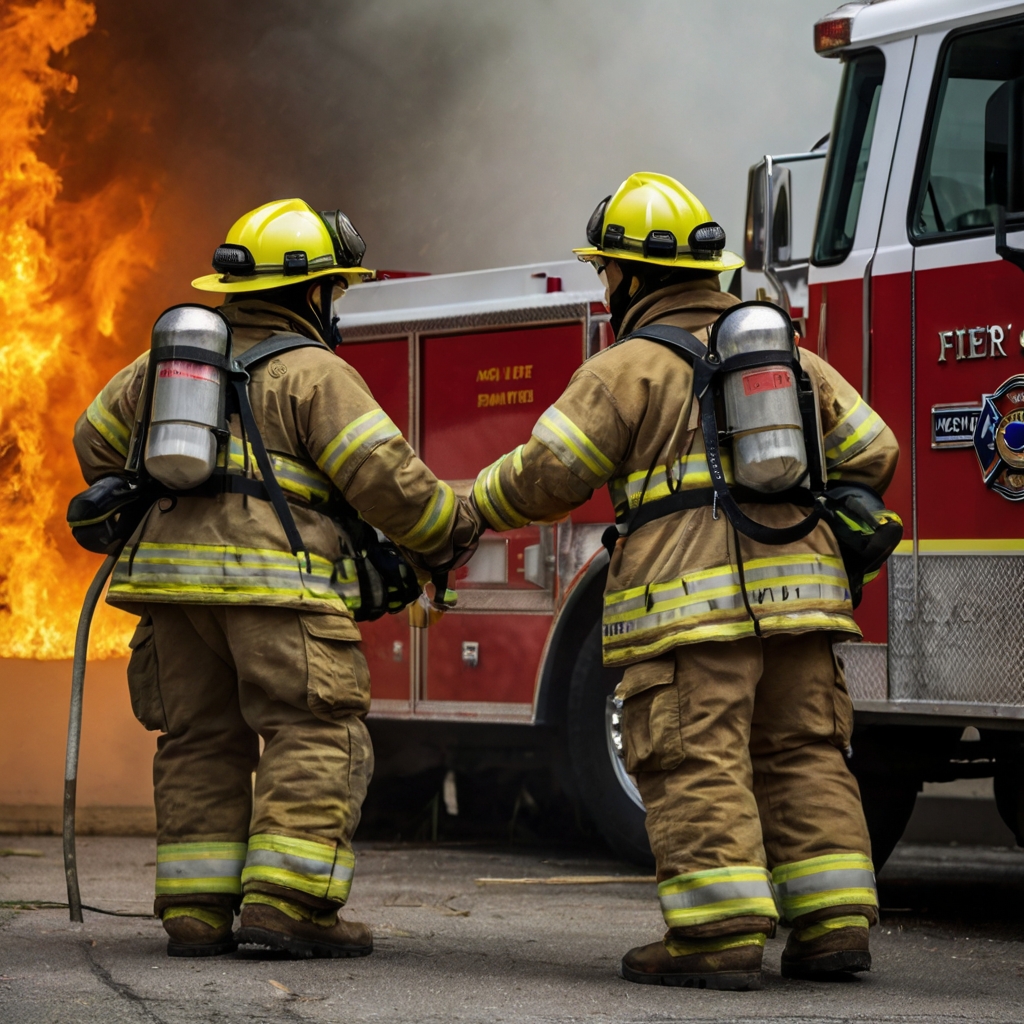Firefighter Schedule

A staggering 94% of fire departments in the United States face a schedule crisis that pushes their firefighters to the limit. These vital first responders work 56 hours weekly on average. Their typical pattern includes a 24-hour shift followed by 48 hours of rest.
Firefighters do much more than battle blazes. Medical emergencies make up 71% of their emergency calls, and they must stay alert throughout their long shifts. The standard work pattern still includes ten 24-hour shifts each month. Many departments now try different approaches like the 48/96 schedule that could help their team’s wellness and cut down on burnout.
This piece takes a closer look at firefighters’ daily schedules and shows how these dedicated professionals handle their challenging shifts. It reveals their family life struggles and the ways they protect their physical and mental health during these extended hours of service.

Table of Contents
Understanding the Basic 24-Hour Firefighter Schedule
Fire departments in America organize their operations around the clock to provide emergency response coverage at all times. The 24-hour shift system is the foundation of most fire department schedules. Firefighters work full day-long shifts that start in the morning, usually at 7:00 or 8:00 AM.
What a 24-hour shift means
A 24-hour shift covers a full day of service. Firefighters stay at the station ready to respond to emergencies whenever they happen. These shifts help departments maintain steady coverage throughout the year, even during weekends and holidays. The schedule lets firefighters work more than the standard 40-hour workweek, and many put in about 56 hours weekly.
Long shifts serve several operational needs. Departments can handle long emergency responses without changing shifts, especially during complex events like structure fires or hazardous material incidents. Teams become more cohesive and can complete training sessions during each shift.
Common schedule patterns
Fire departments typically use three main schedule types:
- 24/48 Schedule: The most common pattern where firefighters work 24 hours and rest for 48 hours. This creates a three-platoon system (A, B, and C shifts) that rotates continuously.
- 48/96 Schedule: A newer approach that’s becoming popular where firefighters work two 24-hour shifts back-to-back followed by four days off. Firefighters get more time to recover between work periods.
- California Swing Shift: An alternative schedule where firefighters switch between 24 hours on duty and 24 hours off for five days straight, then get four days off.
The three-platoon system provides 24/7 coverage while keeping reasonable work hours for the staff. Firefighters usually work about ten 24-hour shifts each month. This approach works well for both emergency response and managing department resources.
Daily Life During a 24-Hour Shift
Firefighters across the nation start their day with a well-coordinated routine. This routine sets the tone for their 24-hour shift. They arrive at 7:30 AM to prepare for their 8:00 AM shift start and receive assignments from the departing crew.
Morning routines and equipment checks
The day starts with complete apparatus checks. Firefighters inspect every piece of equipment, from engines to ladder trucks. Crews take their time to verify that each component works properly. EMTs and Paramedics focus on checking medical equipment and medication inventory.
Fitness training is the life-blood of the morning routine. Departments reserve time around 9:00 AM for exercise. Firefighters must pass two fitness tests each year to stay operationally ready.
Emergency response readiness
Firefighters stay prepared throughout their shift. Crews must suit up and leave the station within 90 seconds when an emergency call comes in. This state of readiness affects their simple activities. They must be ready to stop everything at a moment’s notice.
Emergency response work needs firefighters to put on their gear faster. Department rules require them to wear their full bunker gear within 60 seconds. This gear might be bulky and heavy but protects them during emergencies.
Downtime activities
Firefighters use time between emergency calls to boost their professional skills. The afternoon hours give them the most time to complete essential tasks. These periods include:
- Training sessions covering firefighting techniques and medical skills
- Business inspections within the community
- Equipment and apparatus maintenance
- Public education programs
- Report writing and administrative duties
Crews return to quarters by 5:00 PM but continue working on reports and preparing dinner. During a typical 24-hour shift, they respond to about 15 service calls. Firefighters stay ready to respond to emergencies even during rest periods that usually begin around 10:00 PM.
The Hidden Challenges of 24-Hour Shifts
Firefighters follow strict routines, but their schedules create serious health problems. Research shows 73% of firefighters report poor sleep quality. This number reveals a major problem in their profession.
Sleep disruption impacts
Sleep deprivation stands out as the biggest problem for firefighters working 24-hour shifts. Emergency calls keep interrupting their rest periods, leaving them without enough sleep. Their alertness drops the next day. The effects are scary: anyone who stays awake for 24 hours shows the same reaction time and critical thinking as someone with a blood alcohol level of 0.10 percent.
Physical demands
Long shifts take a heavy toll on firefighters’ bodies. Research shows extra 24-hour shifts beyond regular schedules lead to serious health risks:
- Higher risk of cardiovascular disease
- Increased likelihood of obesity
- Gastrointestinal problems
- Compromised immune system function
These health issues create real problems at work. People working extended hours take sick leave and quit their jobs almost three times more often than others.
Mental stress factors
Job stress puts a heavy burden on firefighters’ health. Their work demands and organizational systems make them more likely to develop musculoskeletal disorders. Bad relationships at work and lack of recognition lead to other health problems.
The stress gets worse when you look at work-life balance. Married firefighters often give up sleep to spend time with family. Single firefighters find it easier to get enough rest. The growing number of non-emergency calls has led to compassion fatigue.
The World Health Organization now calls shift work a probable carcinogen. This finding becomes even more important because people who sleep less than six hours each night are 1.5 times more likely to die when diagnosed with cancer compared to those who get 7-8 hours of sleep.
These challenges pile up over time. Long shifts wear down both body and mind, and about 60% of emergency service workers say they feel moderate to severe fatigue. The effects spill over into their family lives and overall happiness.

How Firefighters Manage Family Life
Marriage statistics show a troubling reality in the fire service: firefighters experience a divorce rate three times higher than the general population. This stark reality comes from the unique pressures of the firefighter shift schedule and how it affects family life.
Balancing relationships
Communication is the life-blood of successful firefighter marriages. We learned that couples with strong relationships develop specific strategies:
- Create dedicated transition time after shifts
- Schedule regular check-ins throughout the day
- Plan intentional quality time during off-duty days
- Build a support network with other firefighter families
- Set clear expectations about work pressures
Successful firefighter couples know their relationship needs change week by week. Yes, it is true that many find strength by accepting that their marriage is different from traditional partnerships. Both partners must take charge of their own happiness while supporting each other’s needs.
Special occasions and holidays
The firefighter work schedule means missing many special occasions. Firefighters work through holidays, birthdays, and family gatherings. Many departments have created innovative solutions to handle these challenges.
The core team members get more flexibility in holiday scheduling. They work with junior staff to coordinate coverage. Junior firefighters without children often take holiday shifts in exchange for other preferred days off.
Many families celebrate occasions on different dates. The extended time off between shifts – typically 48 to 96 hours – is a chance to create meaningful family connections. This schedule lets firefighters spend time with their children at times when most parents work traditional nine-to-five jobs.
These arrangements work best with spousal support. Research shows that a loving, supportive marriage serves as the best stress relief for firefighters, with evidence of lower stress disorder rates among married personnel. Of course, families who adopt the uniqueness of the firefighter lifestyle find ways to turn schedule challenges into chances for deeper connections.
Happy families report that having independent interests helps balance the relationship. Spouses who enjoy their own activities and keep social connections outside the fire service handle the schedule demands better. Successful firefighter families see their lifestyle as a way to create unique family traditions and bonds rather than a series of sacrifices.
Health and Wellness on Long Shifts
Firefighters working extended shifts must pay strategic attention to nutrition and recovery to maintain optimal health. Research shows shift workers with rotating schedules consume food more erratically than day workers. This creates unique challenges for those working 24-hour shifts.
Nutrition strategies
Proper nutrition serves as the life-blood of firefighter health. The physical demands of the job require between 4,000 to 6,000 calories daily. Shift workers tend to consume more unhealthy foods and sugary snacks. This highlights the need for structured eating patterns.
Firefighters should follow these evidence-based nutrition guidelines to perform optimally:
- Consume nutrient-dense meals balancing carbohydrates, proteins, and healthy fats
- Schedule meals 2-3 hours before sleep periods
- Maintain consistent hydration, limiting caffeine intake during later shift hours
- Focus on whole foods instead of processed alternatives
- Plan and prepare meals in advance to avoid relying on fast food
Meal timing and frequency substantially influence health outcomes. The unpredictable nature of emergency calls often disrupts regular mealtimes. Each hour decrease in the interval between the last meal and sleep onset increases diurnal sleep duration by 0.39 hours.
Rest and recovery methods
Recovery between shifts demands both active and passive approaches. Quality sleep forms the foundation for stronger immune systems and improved decision-making capabilities. Chronic sleep deprivation increases risks of weight gain, diabetes, and cardiovascular disease.
Active recovery methods are crucial to maintain peak performance. Firefighters see benefits from post-workout stretching and self-myofascial release techniques. Dedicated flexibility training sessions lasting 30-60 minutes help optimize physical and mental recovery.
The U.S. Department of Health and Human Services highlights several benefits of proper rest: stronger immune function, improved stress management, and boosted cognitive performance. Firefighters should prioritize sleep after shifts by:
- Creating a cool, dark sleeping environment
- Eliminating electronic distractions before bedtime
- Maintaining consistent sleep schedules, even on days off
Adequate sleep allows the body’s glycogen stores to refill through passive recovery. Quality rest helps rebuild damaged tissue and restore muscle glycogen. Massage therapy and compression techniques help regulate the nervous system and promote recovery effectively.
Firefighters need extraordinary dedication to maintain peak performance during grueling 24-hour shifts. These professionals do more than fight fires. They handle medical emergencies, follow rigorous training schedules and work hard to stay physically and mentally fit.
Heroes in the fire service face challenges that go far beyond the firehouse doors. Their bodies and minds deal with disrupted sleep, physical demands, and mental stress. Successful firefighters develop practical ways to manage their nutrition, rest, and family life.
A firefighter’s life balances service and self-care perfectly. These dedicated professionals show that good planning, strong support systems, and smart health strategies make 24-hour shifts manageable. Their steadfast dedication to public safety, despite personal sacrifices, proves the exceptional nature of people who choose this challenging yet rewarding path.
The realities of a firefighter’s schedule reveal both struggles and victories. Knowing how to stay effective through long shifts while managing family relationships and personal health shows the exceptional character needed in this vital profession.
Here are some FAQs about the firefighter schedule:
What is the most common schedule for a firefighter?
The most common firefighter schedule is the 24-hour shift, where firefighters work a full day, followed by 48 hours off. This is often referred to as a firefighter 24-hour shift schedule. It allows for continuous coverage while giving firefighters extended time off between shifts, which helps balance work-life demands. However, variations in the firefighter work schedule exist depending on the department and location.
What is the 5 2 5 3 schedule?
The 5 2 5 3 firefighter schedule refers to a shift pattern where firefighters work five days, followed by two days off, then five more days of work and three days off. This typical firefighter schedule provides a consistent work routine, ensuring that shifts are covered without overwhelming the staff. It’s commonly used in certain fire departments that have a rotating schedule model.
What does 5555 mean to firefighters?
The 5555 schedule for firefighters indicates that they work five days, followed by five days off in a repeating cycle. This firefighter work schedule is designed to balance the number of shifts worked with adequate time for rest and recovery. It ensures that firefighters are available for duty while giving them a significant amount of time off.
What is a 1/3 2/3 schedule?
The 1/3 2/3 schedule is another type of firefighter shift schedule where firefighters work one day, followed by two days off, and then three days on. This allows for varied work periods, while still giving firefighters plenty of rest. This schedule type may be utilized in areas with specific shift coverage needs.
How does a 4-3-3-4 schedule work?
The 4-3-3-4 firefighter schedule involves working four days on, followed by three days off, repeating in a cycle. This schedule often alternates between 12-hour shifts, ensuring 24-hour coverage while maintaining flexibility for the firefighter. This schedule gives firefighters adequate off-time while still covering the required shifts.
What does an 8 hour shift look like?
An 8-hour firefighter shift typically means a more traditional workday, often from 7 a.m. to 3 p.m. or 3 p.m. to 11 p.m. This type of firefighter shift schedule may be more common in departments with less demand for continuous, 24-hour coverage. However, it can be less common in fire stations where the need for constant readiness requires longer shifts.
What is the 4 5 5 4 schedule?
The 4 5 5 4 schedule for firefighters involves four days of work, followed by five days off, then five days of work again with another four days off. This rotating firefighter schedule ensures that there is always coverage while providing firefighters with a balanced routine. The schedule is popular in certain areas as it helps distribute work hours and provides flexibility for both personal and professional needs.

